Tools
Laser
Laser Cutting is a non-contact process which utilizes a laser to cut materials, resulting in high quality, dimensionally accurate cuts. The process works by directing the laser beam through a nozzle to the workpiece. A combination of heat and pressure creates the cutting action. The material melts, burns, vaporizes, or is blown away by a jet of gas, leaving an edge with a high-quality surface finish.
LINK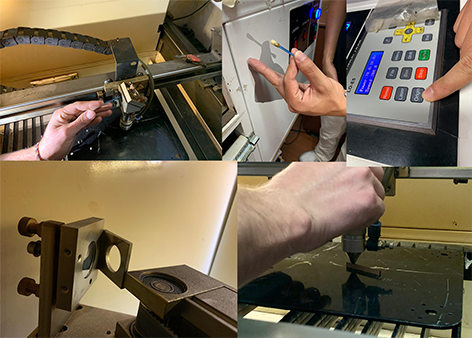
Materials
NEVER CUT THESE MATERIALS
WARNING: Because many plastics are dangerous to cut, it is important to know what kind you are planning to use.
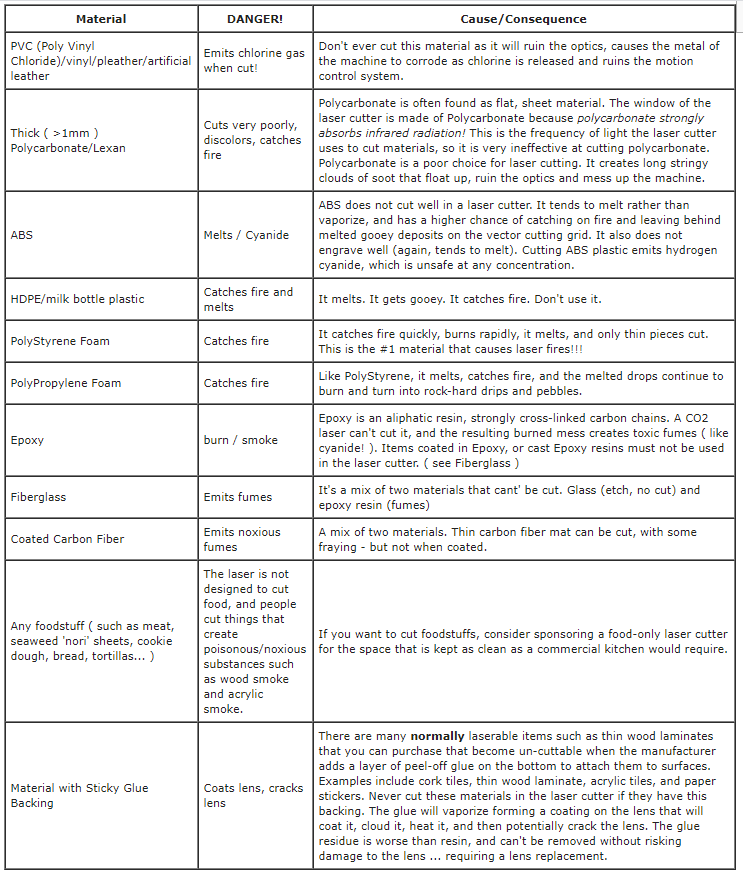
Safe Materials
The laser can cut or etch. The materials that the laser can cut materials like wood, paper, cork, and some kinds of plastics. Etching can be done on almost anything, wood, cardboard, aluminum, stainless steel, plastic, marble, stone, tile, and glass.
LINK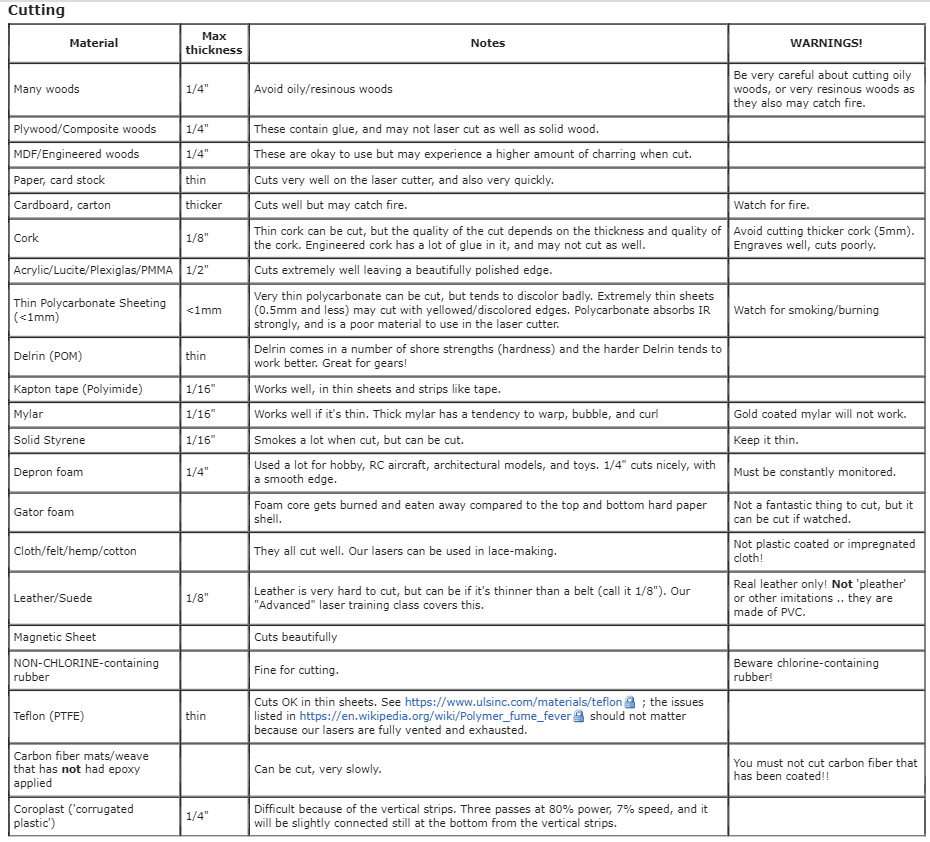
List of Materials of the Laboratory.
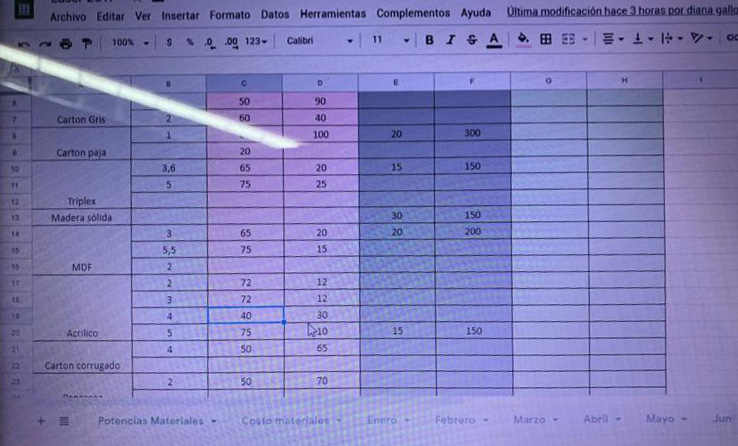
Kerf = Width
Kerf is defined as the width of material that is removed by a cutting process. It was originally used to describe how much wood was removed by a saw, because the teeth on a saw are bent to the side, so that they remove more material than the width of the saw blade itself, preventing the blade from getting stuck in the wood. Over the years I’ve heard some people use the term when referring to the angle on the edge of the part, but that would be an incorrect use of the word. The “cut angle” on the edge of the part makes measuring the kerf width sorta tricky, but for consistency, the word “kerf” should only be used when talking about the actual cut width. Kerf Width From Plasma Gas Waterjet And Laser - Click for larger viewWhy kerf width is important. When cutting parts on a CNC plasma or laser machine, you want to produce accurate cut parts, with final dimensions as close as possible to the programmed shape. So if you program a 6” by 6” square, and the plasma arc removes 0.200” of material, as it cuts, then the resulting part is going to be 5.8” by 5.8”. So the actual tool path has to be compensated by 0.100” to the side of the programmed path, all the way around the part. Rather than re-program the part at a different dimension, the CNC will take care of this automatically just by telling it which direction to offset, and by how much. Most modern CNCs take the actual kerf amount and automatically offset the tool path by 1/2 of that amount, so that the finished part comes out very close to the programmed dimensions. That is why the kerf value is often referred to as “kerf offset”.
LINK
Vinyl Cutter
A machine that is mostly used for trimming Vinyl and other materials into many shapes or letters as you may want is called the Vinyl Cutter. The Vinyl machine is not a very big device rather; it is almost the same size as a computer printer which you can connect to a computer with a cable. You can really say that the Vinyl cutter is a cutting device which can be controlled by a computer. The control of this machine is specifically handled by the computer which makes sure that the sharp blades of the Vinyl cutter machine move properly. It is the duty of these sharp blades to cut out letters or various shapes from sheets of the adhesive Vinyl material. When these letters or shapes are cut with the vinyl machine, they can be stuck on any surface you may like.
LINK1. Design and Vectorized

2. Prepare the material for the Silhouette Cameo Plotter
The Silhouette Cameo is a cutting plotter that is capable of cutting a wide variety of materials, such as vinyl, paper, fabric, and cardstock. It has a maximum cutting width of 12 inches and can cut materials up to 10 feet in length. Additionally, it features a PixScan™ technology that allows for accurate cutting around printed designs. To create designs for the Silhouette Cameo, I typically use software such as Adobe Illustrator or Autodesk Inventor Professional. These programs allow me to create vector-based designs that can be imported into the Silhouette Studio software for cutting. Once I have my design ready, I simply import it into the Silhouette Studio software, which is compatible with both Windows and Mac operating systems. From there, I can adjust the settings such as blade depth and cutting speed, as well as preview the design to ensure it looks just as I intended. Once everything is set up, I simply press the "cut" button and the Silhouette Cameo does the rest! Overall, the Silhouette Cameo is a versatile and easy-to-use cutting plotter that allows for precision cutting and customization of a wide range of materials.
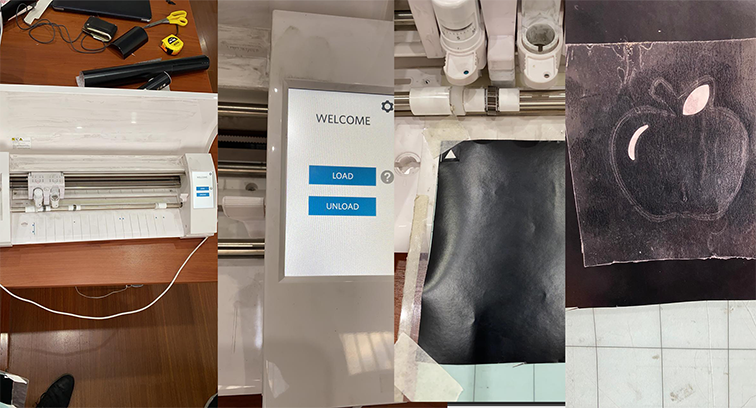
3. Pasted on my Dell laptop. I have an apple, no a Mac
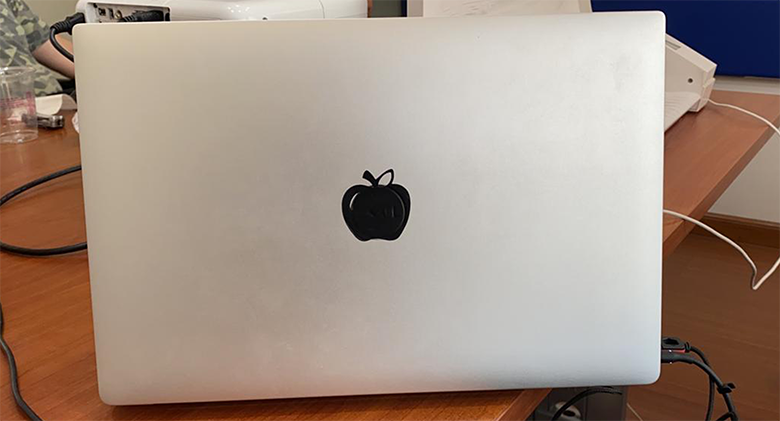
Parametric design is a design process, which utilize the latest parametric modeling techniques to set up the structural geometry of the project, to determine the structural form and structural members, to propose different structural form options, to iterate these structural design options with architect and clients, and to finalize the design options. Parametric modeling is a newly developed modeling technique. It was originally used by architects to set up complex 3D models such as a canopy and a stadium roof with irregular curve forms. In order to quickly, easily, and precisely control the form of the structure, computer programming was used as a tool, allowing the designer to quickly and creatively generate the geometry. This technique has been gradually adopted by the structural engineers since the past few years.
LINK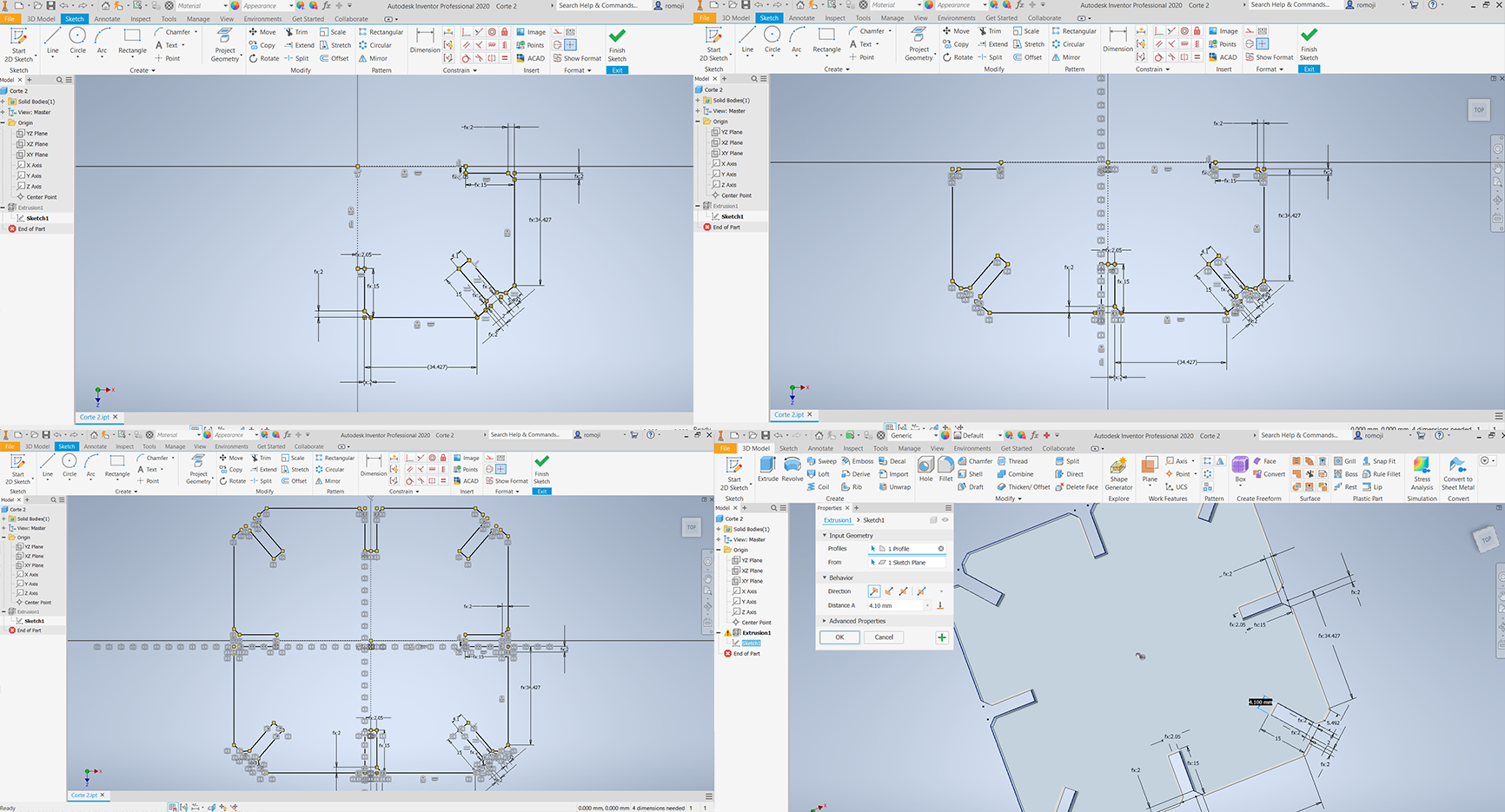
Parametric modeling is a modeling process with the ability to change the shape of model geometry as soon as the dimension value is modified. Parametric modeling is implemented through the design computer programming code such as a script to define the dimension and the shape of the model. The model can be visualized in 3D draughting programs to resemble the attributes of the real behavior of the original project. It is quite common that a parametric model uses feature-based, modeling tools to manipulate the attributes of the model.
LINK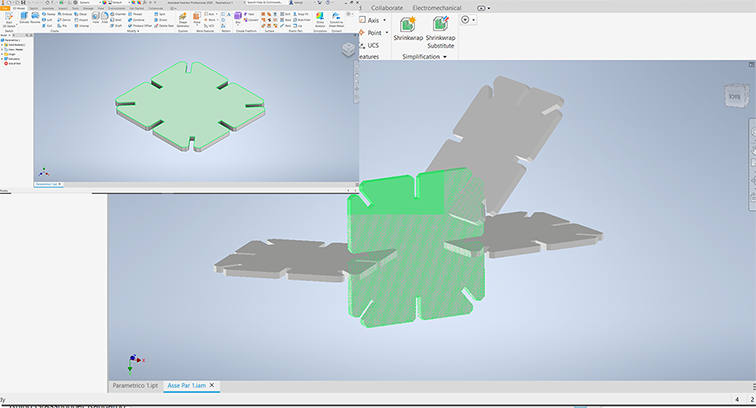
Parametric modeling was first invented by Rhino, which is a 3D draughting software that evolved from AutoCAD. The key advantage of parametric modeling is, when setting up a 3D geometric model, the shape of model geometry can be changed as soon as the parameters such as the dimensions or curvatures are modified; therefore there is no need to redraw the model whenever it needs a change.
LINK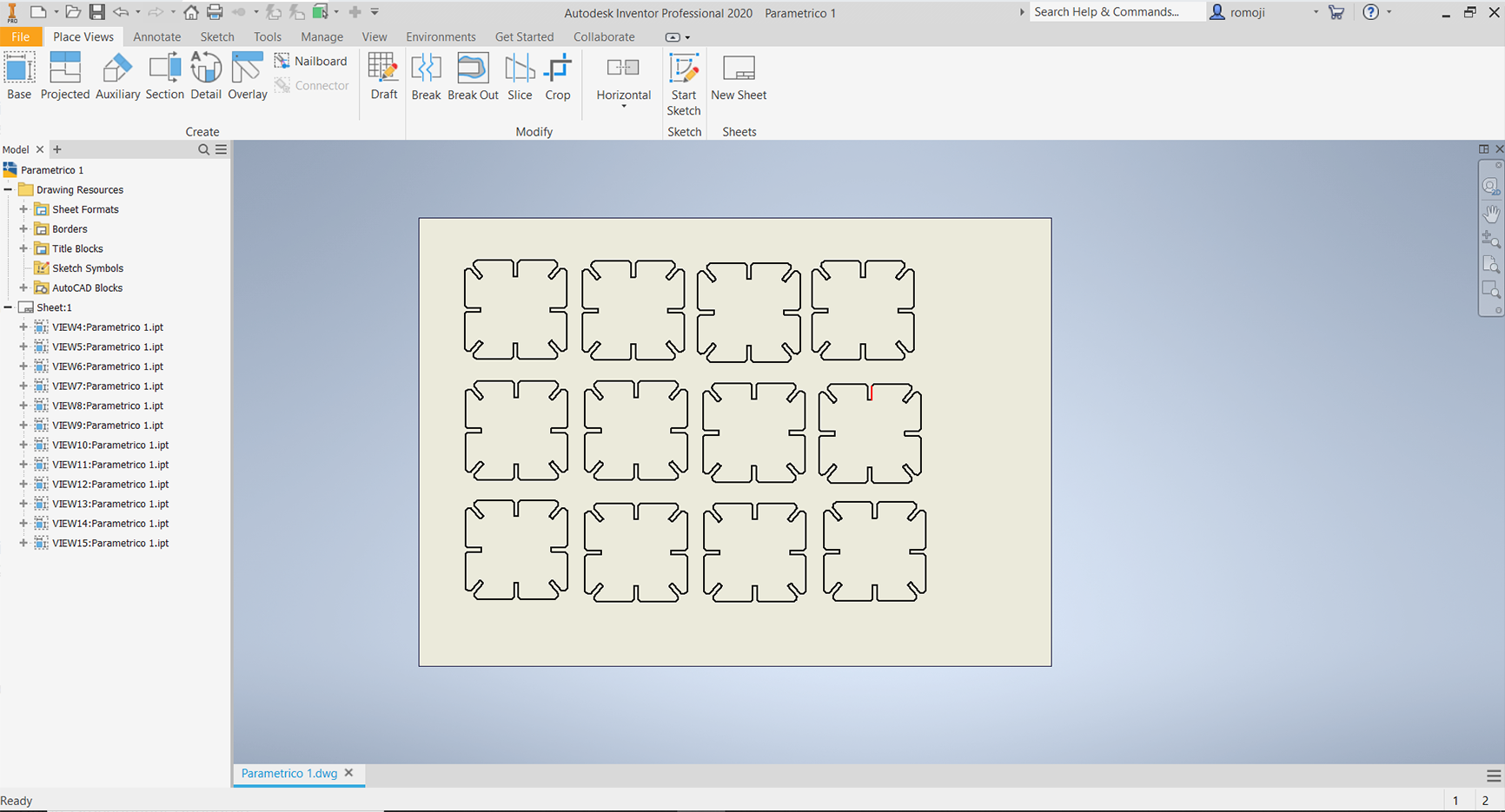
And this is the final result in cardboard.
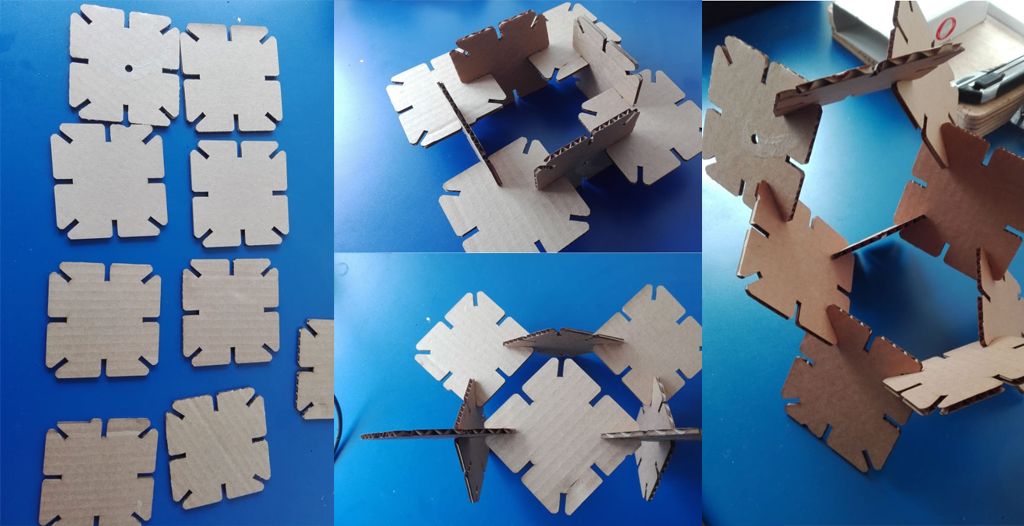
Conclusion
- The use of cutting tools facilitates the understanding of materialization by methods that are not time consuming in terms of volume construction.
- The two-dimensional design allows to have an initial representation under an understanding of a special perspective prior to bringing it to reality.
- The representations of the designs presented served as a practice to strengthen the theoretical aspects of the practice, they are basic examples of the potential of the machinery that we have available in this training.
- Laser cutting represents a useful resource when bringing a model to reality quickly and with maximum accuracy.
- Always keep in mind the calculation of the Kerf.